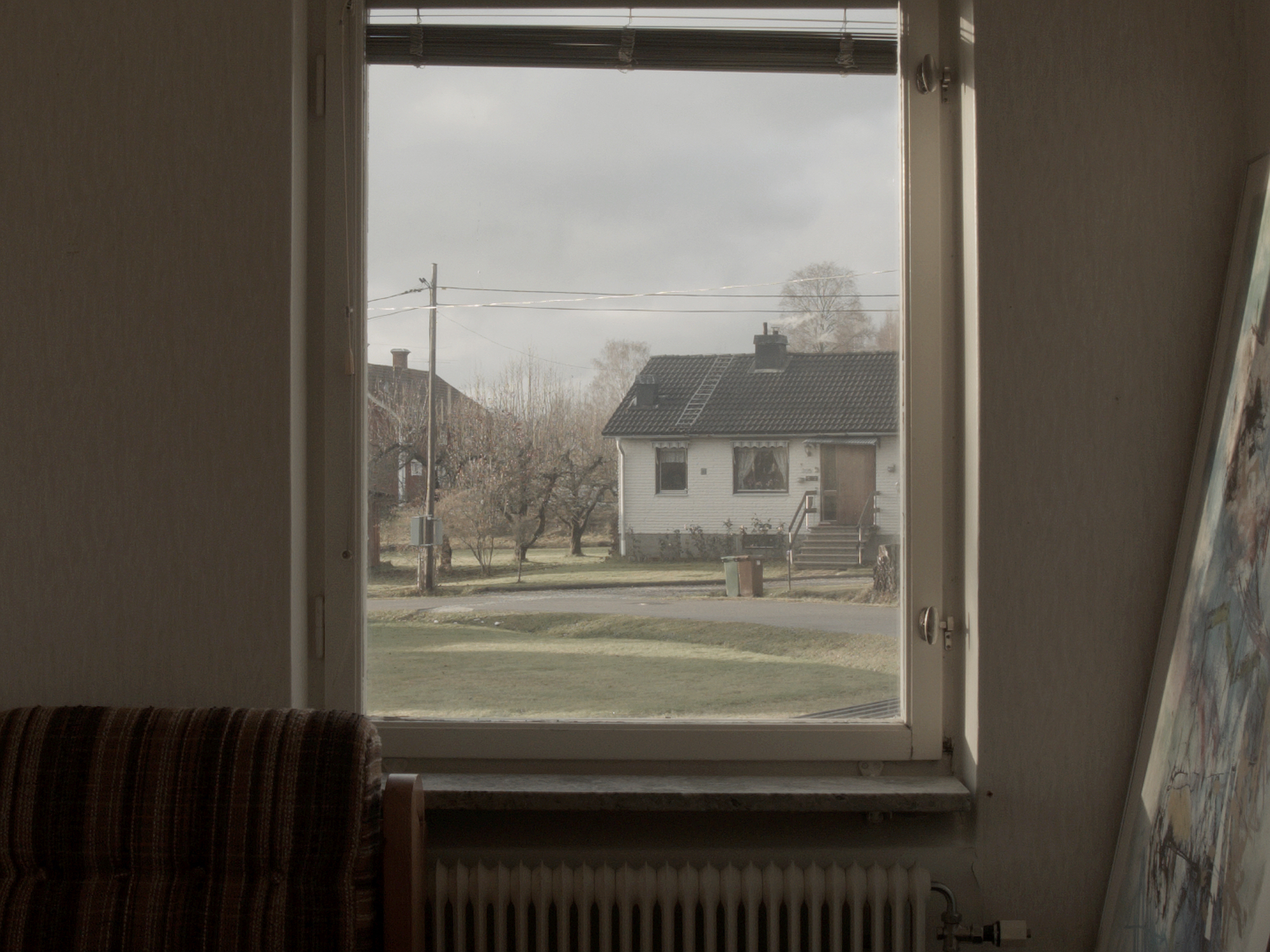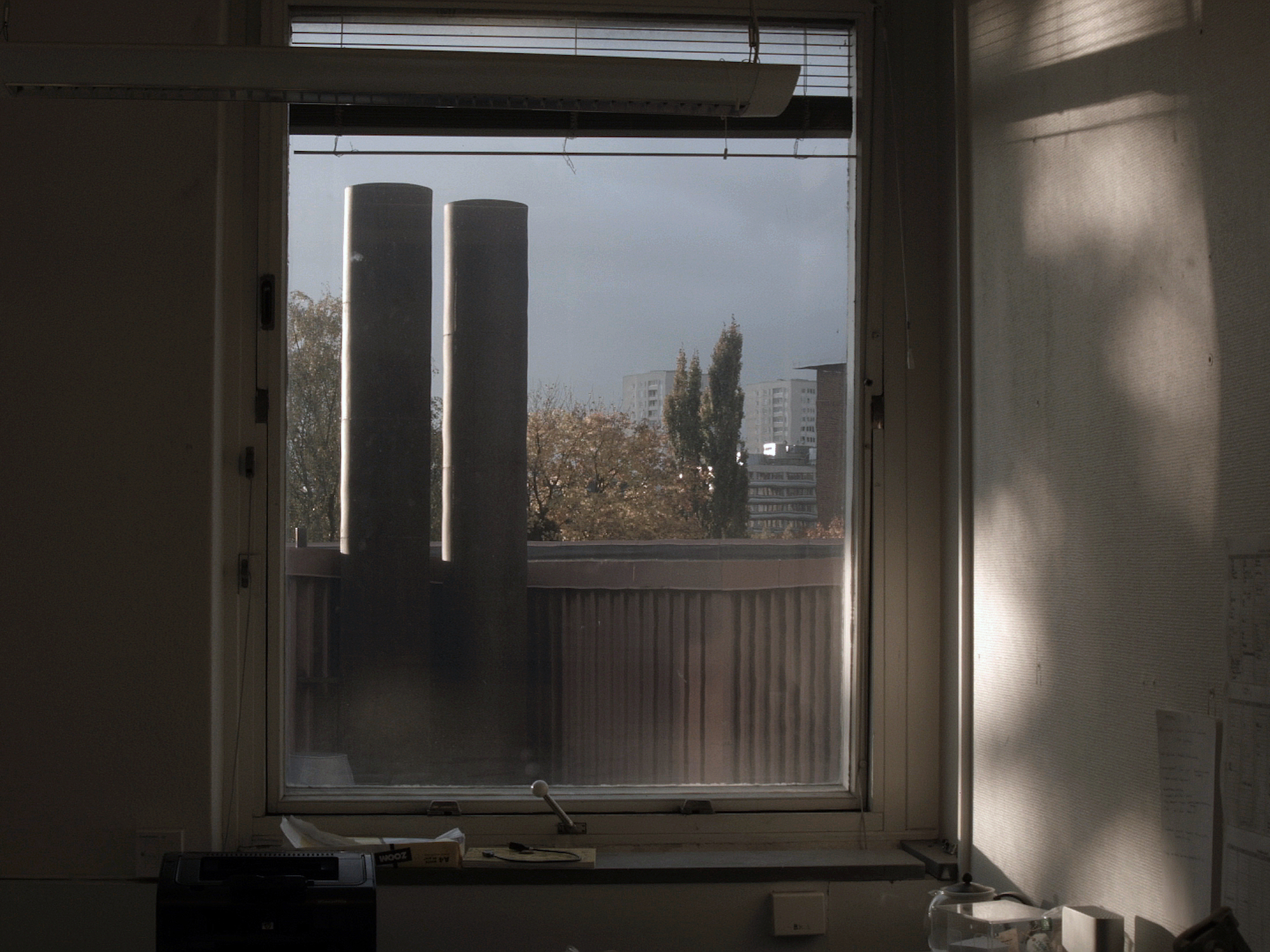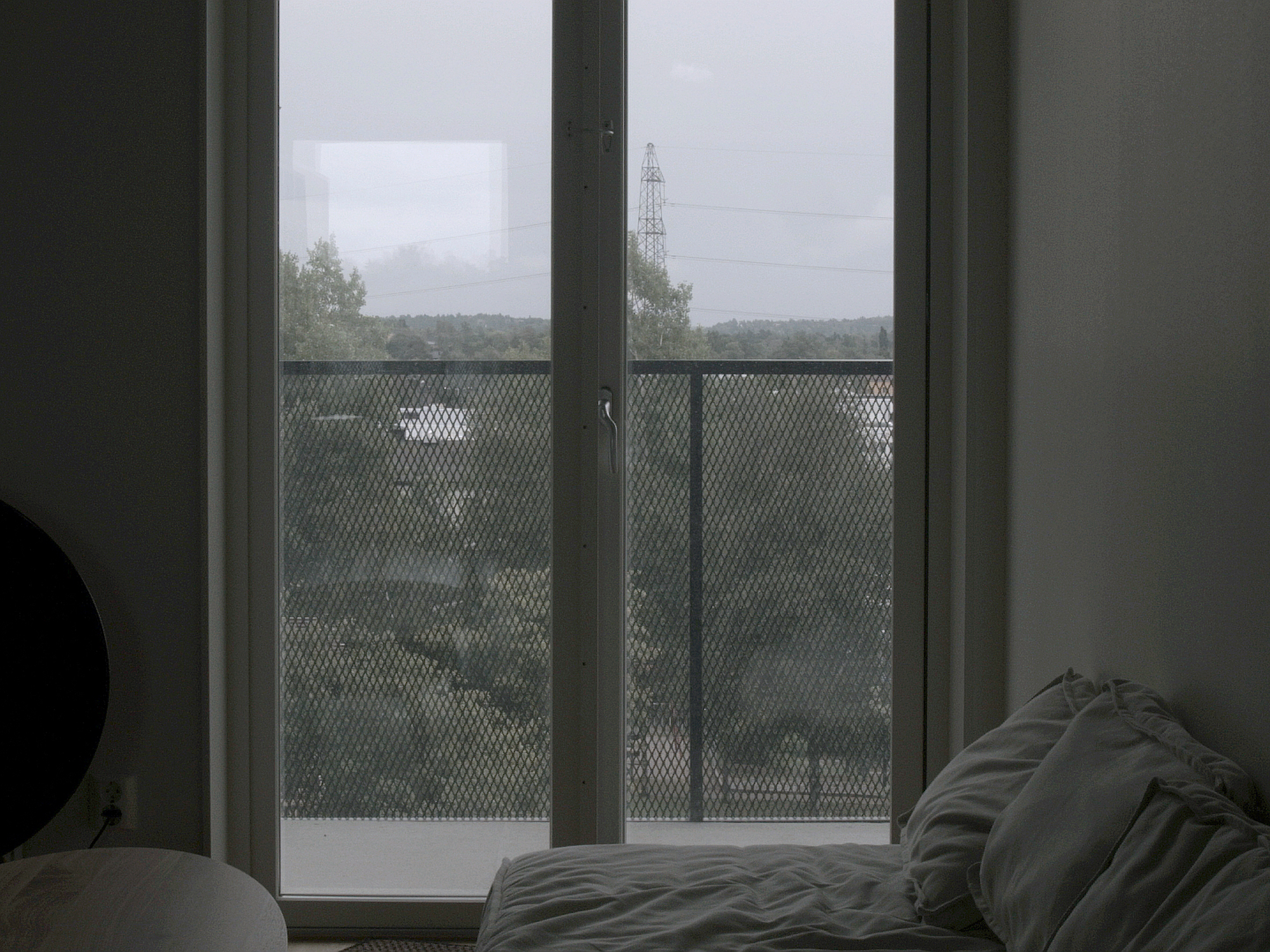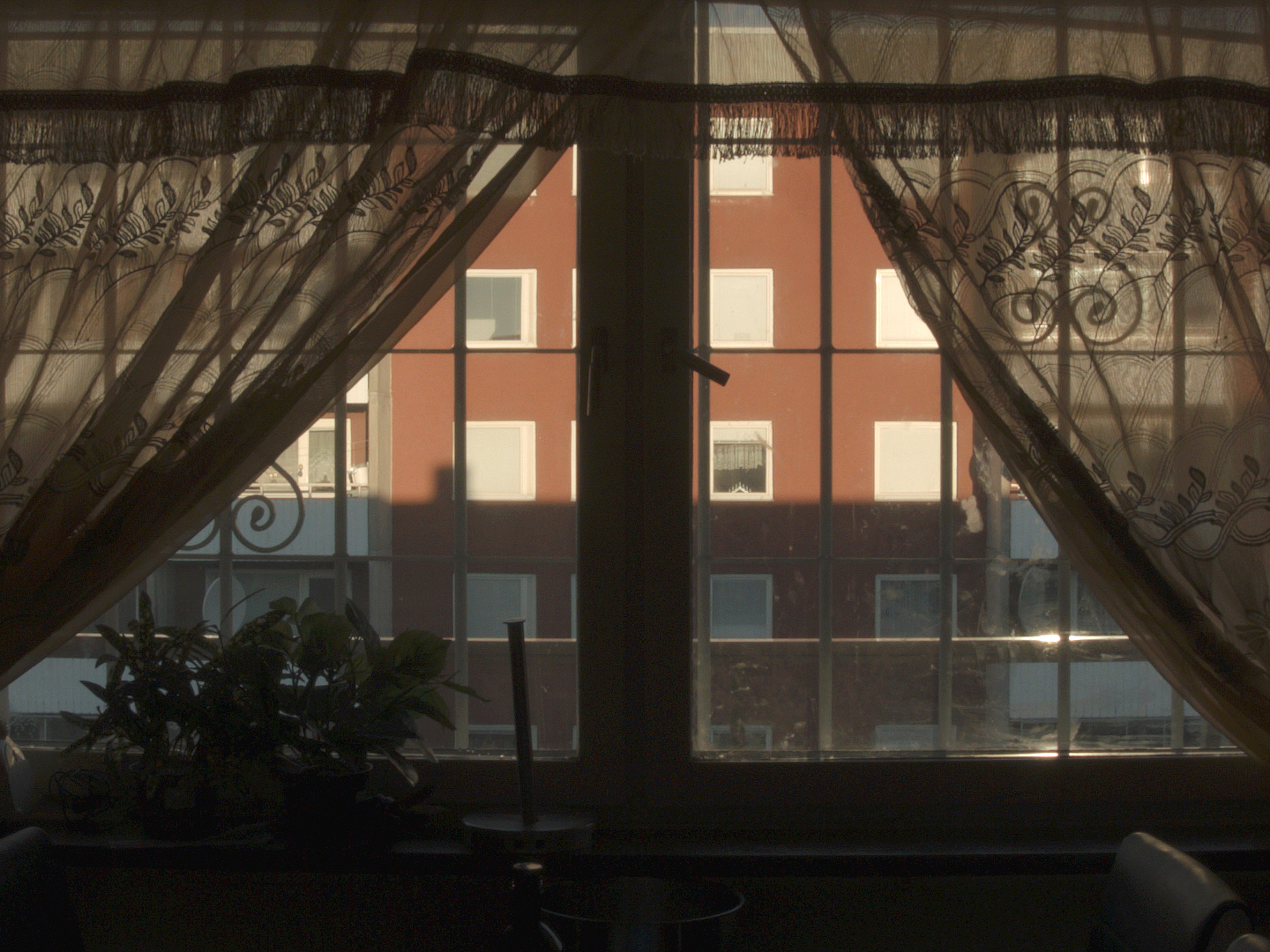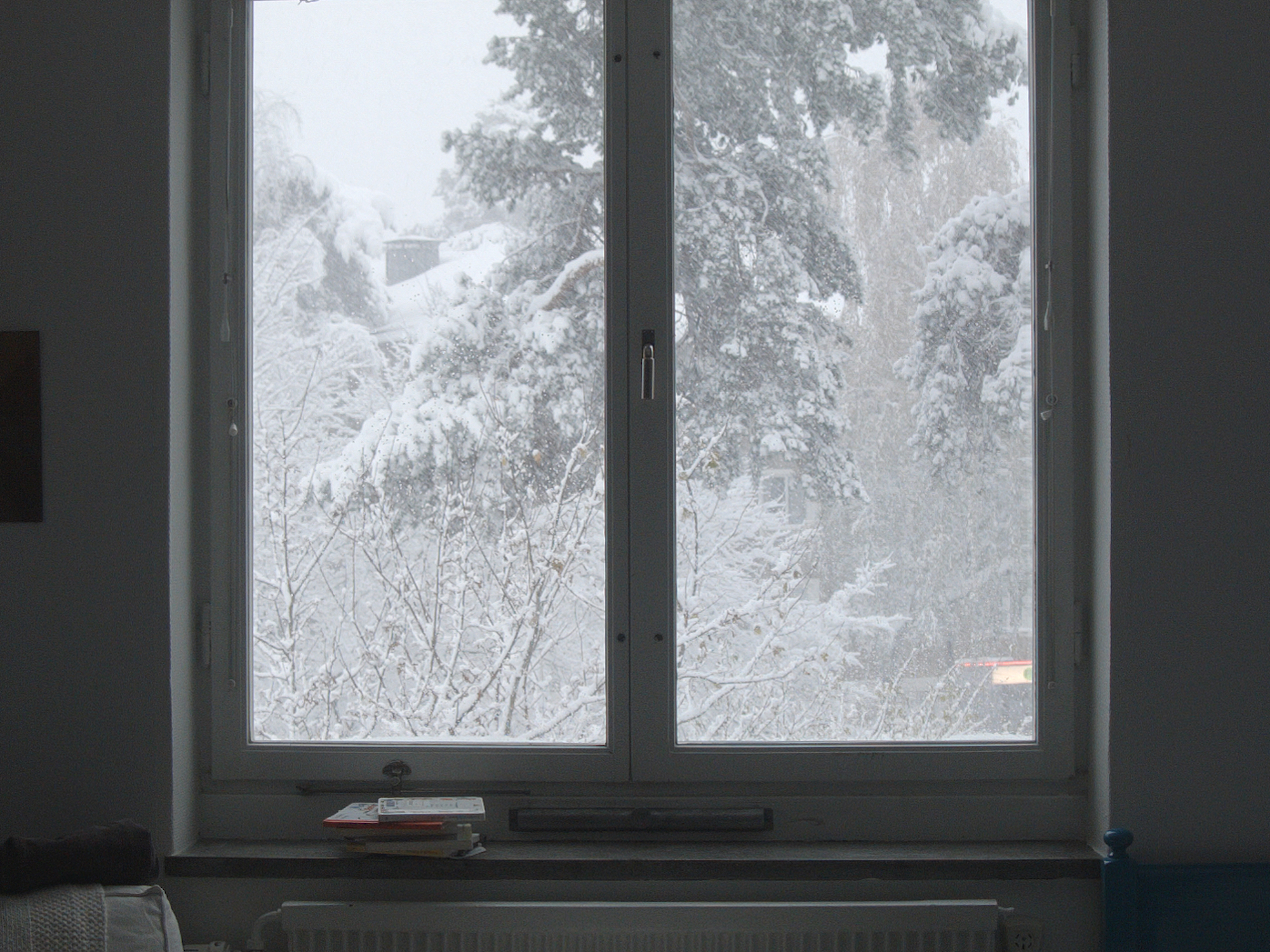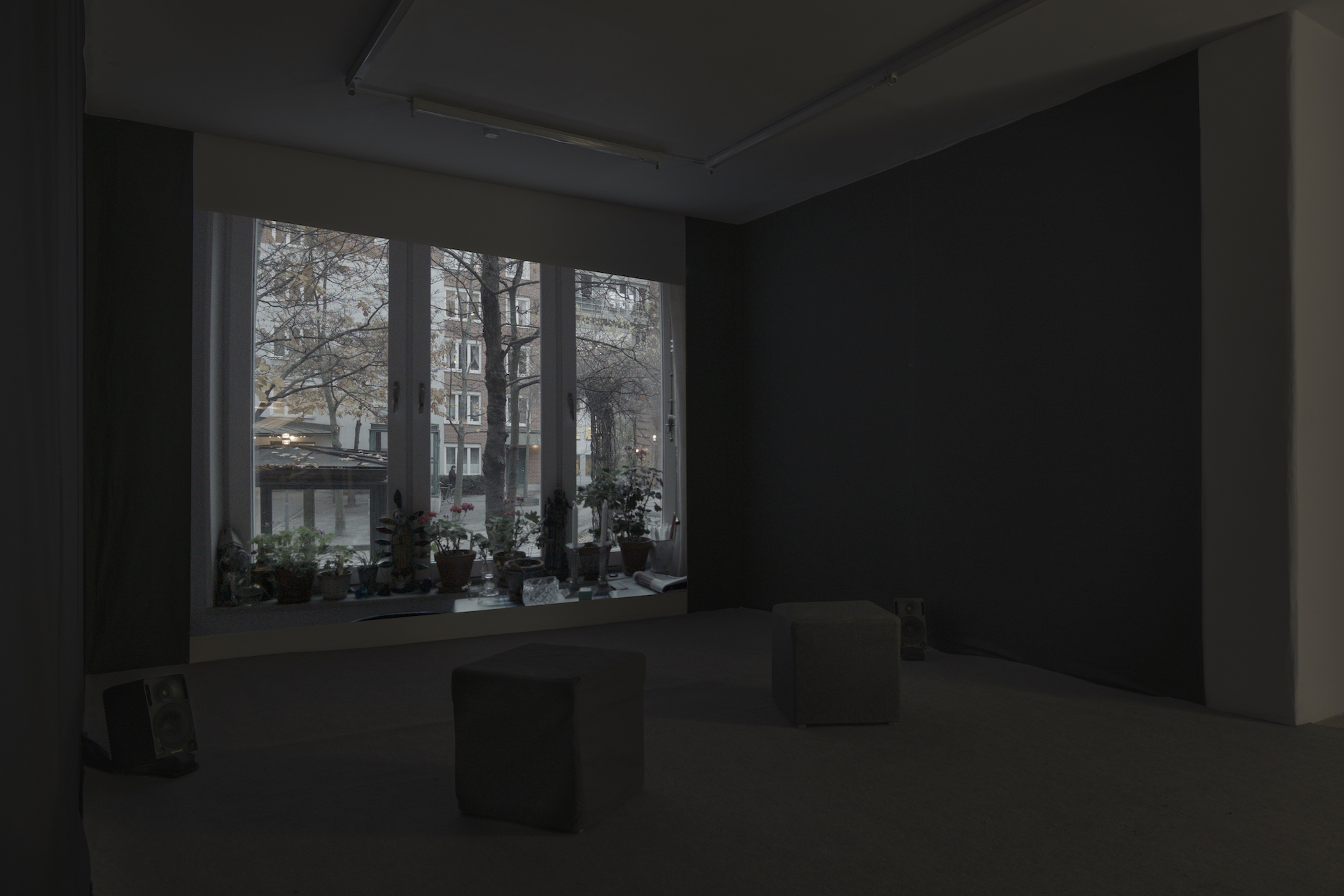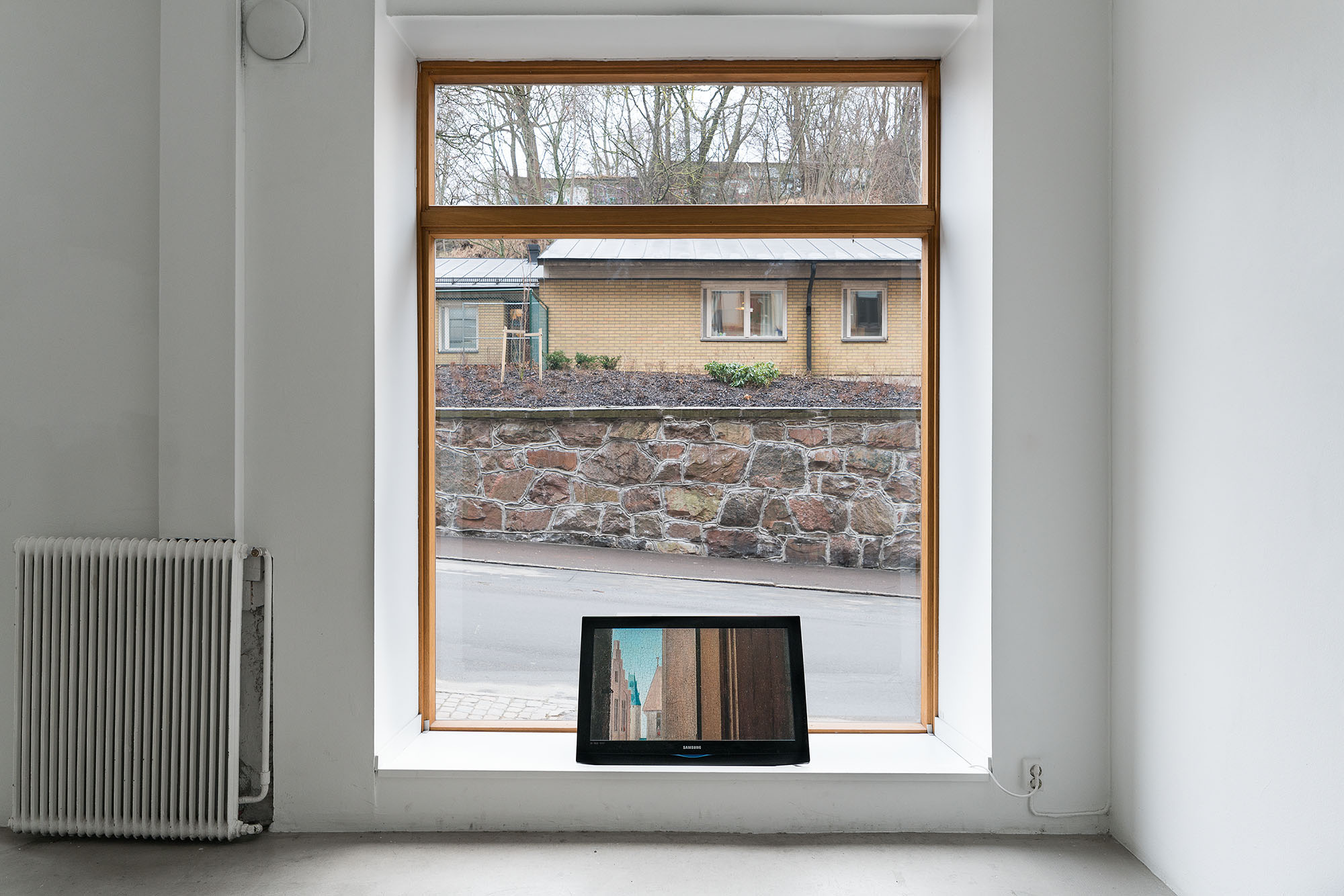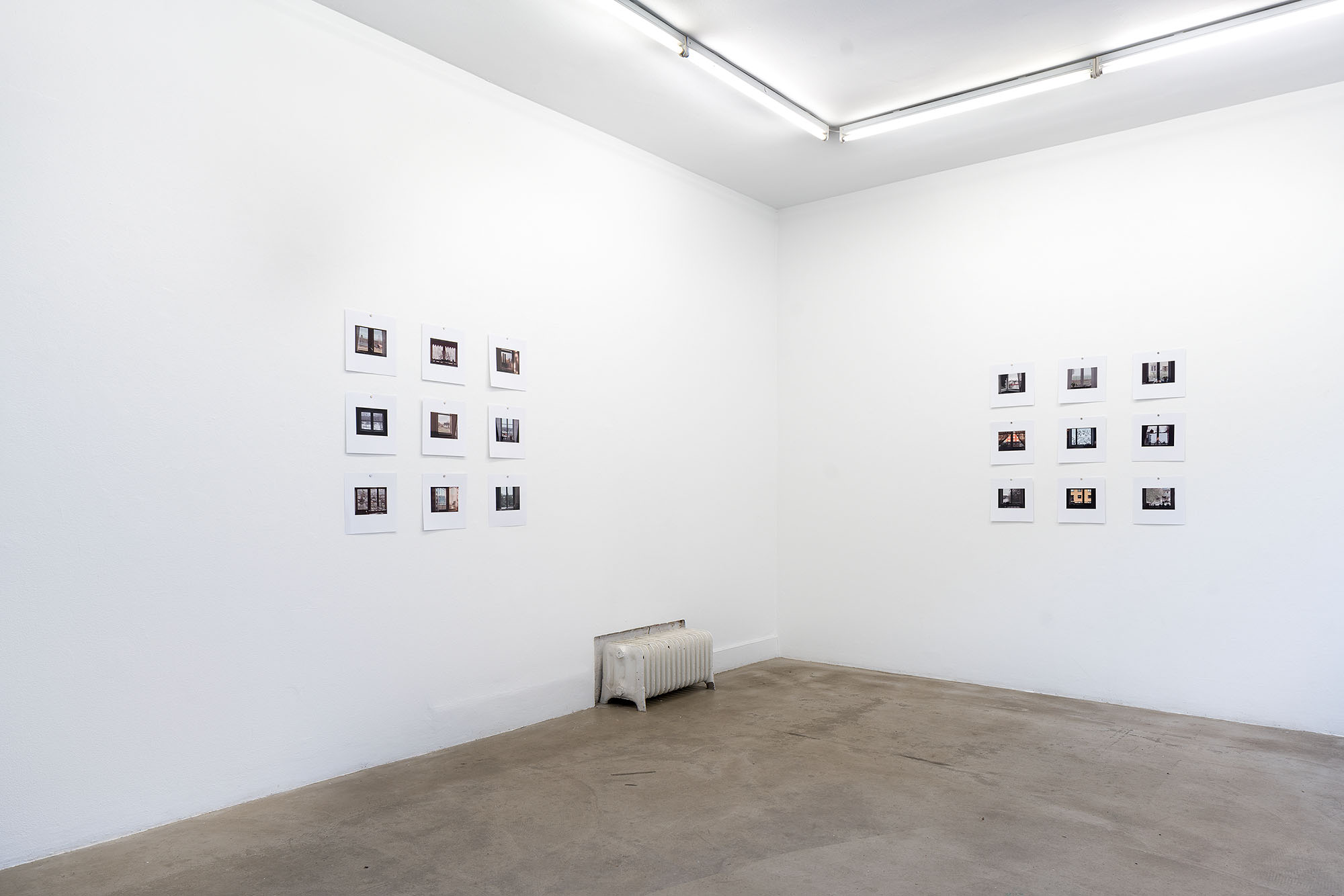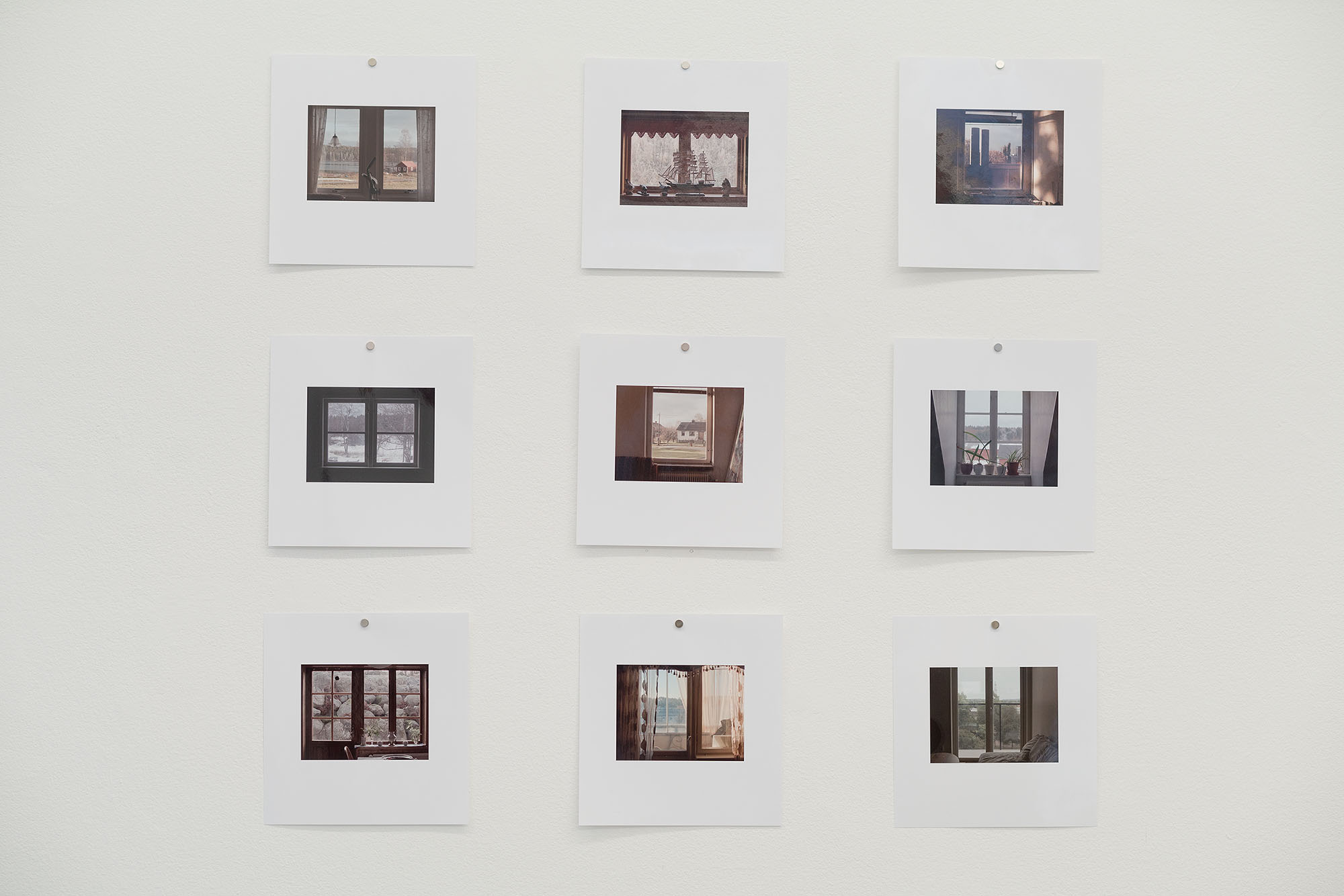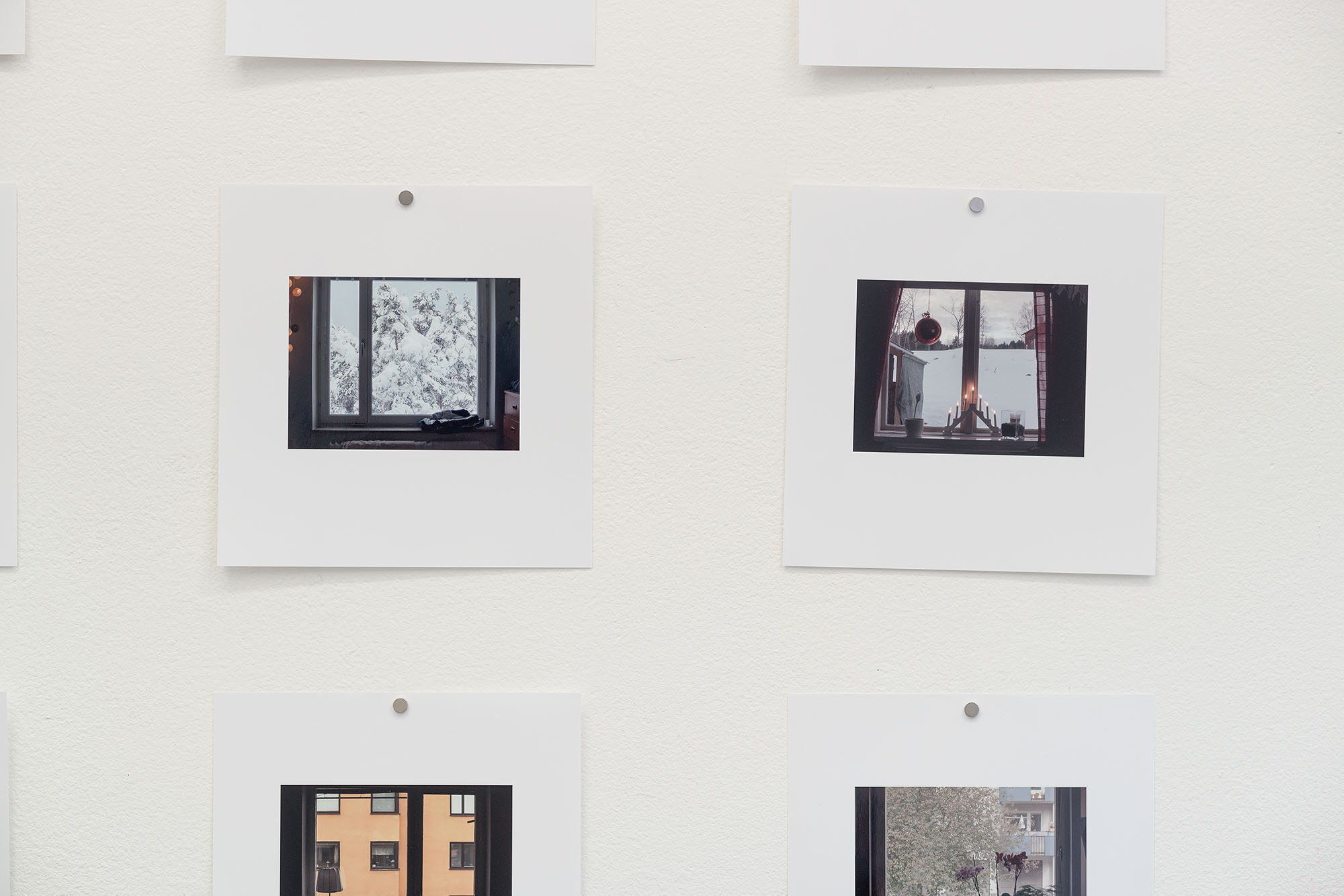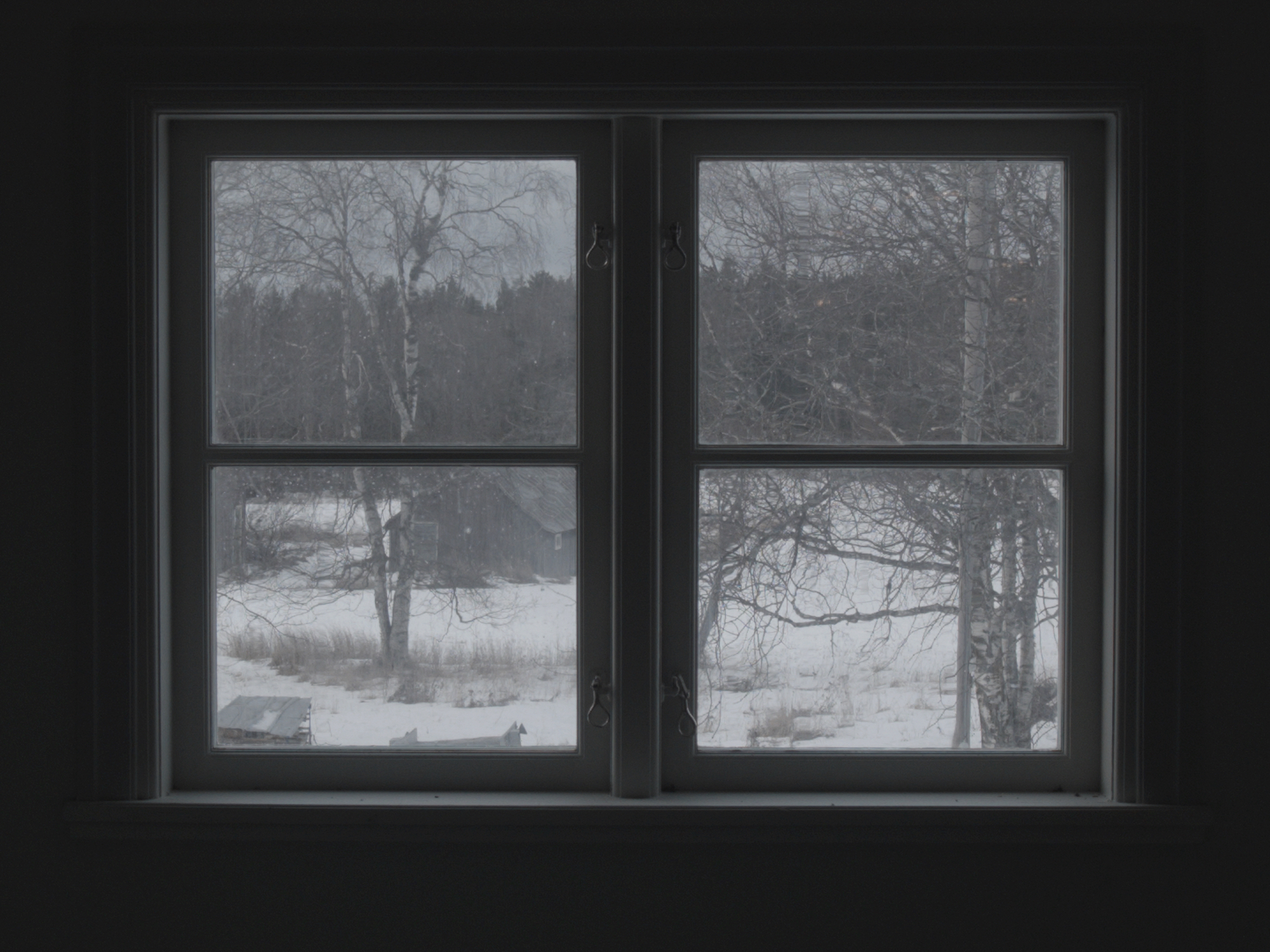THE VIEWS
Photos: Vanja Sandell Billström and Hendrik Zeitler (the gallery).
Video installation.
HD video, 43 minutes, aspect ratio: 4:3, 2017.
Watch one minute trailer.
Participants: Alim Farzan, Bengt Jansson, Clara Bodén, Emma Stenvall, Fadumo Hussein, Gretel Plavén, Johan Israelsson, Lucia Pagano, Luisa Norrman, Magnus Söderström, Martina Norrman, Robert Björklund, Sofia Lindqvist, Ted Olsson och Vanja Sandell Billström.
Solo show at Galleri Box, Göteborg. 2017.01.13 – 02.12.
Other works in the show: ”Vandringar i landskap jag aldrig har besökt” (HD-video, 7 minuter, 2017) och ”Utsikt 1-18” (series of photos, digital C-print, 24 x 24 cm, 2017).
Exhibition text:
[I’m] a flâneuse who never leaves her apartment.
/ Moyra Davey
Notices from the notebook:
- In her film ”Notes on Blue” (2015) Moyra Davey wanders around her apartment with a headset in her ear. The film is a response to the film ”Blue” (1993) by Derek Jarman and on her walk through her home she reads her personal essay about blindess and color. In an interview, Davey admits that she for sure spends time outside her apartment, but that her home has become a refuge where she experience the control and freedom she strives for when making her films.
- I am zooming in at high resolution pictures of Renaissance paintings at the webpages of Museo del Prados and The National Gallery, like the self-portrait of Dürer and different variations of the Annunciation. In their composition, they all share the element of a window with a view of a landscape. As windows became more common during the Renaissance, they were often included in the paintings. Sometimes only small details are visible, as the cherry tree in The Arnolfini Portrait, but more often we see an expansive detailed landscape being framed by the window. Maybe a foreshadow of an landscape painting that took place a couple of hundred years later?
- In her dissertation ”Framed: The Interior Woman Artist-Observer in Modernity”, Rebecca Anne Gershenson Smith draws a parallel between modernistic architects like Le Corbusier and feminist literary criticism. That the window is a liminal space which accommodate more possibilities of actions, than what is usually attributed to the window-watcher.
- Framed horizons, flattened landscapes.
- The video installation: Around ten people invites the audience to their window-view and to a story about the relation to a place. Someone is afraid that she can just leave without feeling anything, another one tries to change an injustice, a third one doesn’t want to be controlled by rules and a fourth one prefer to stay at home.
